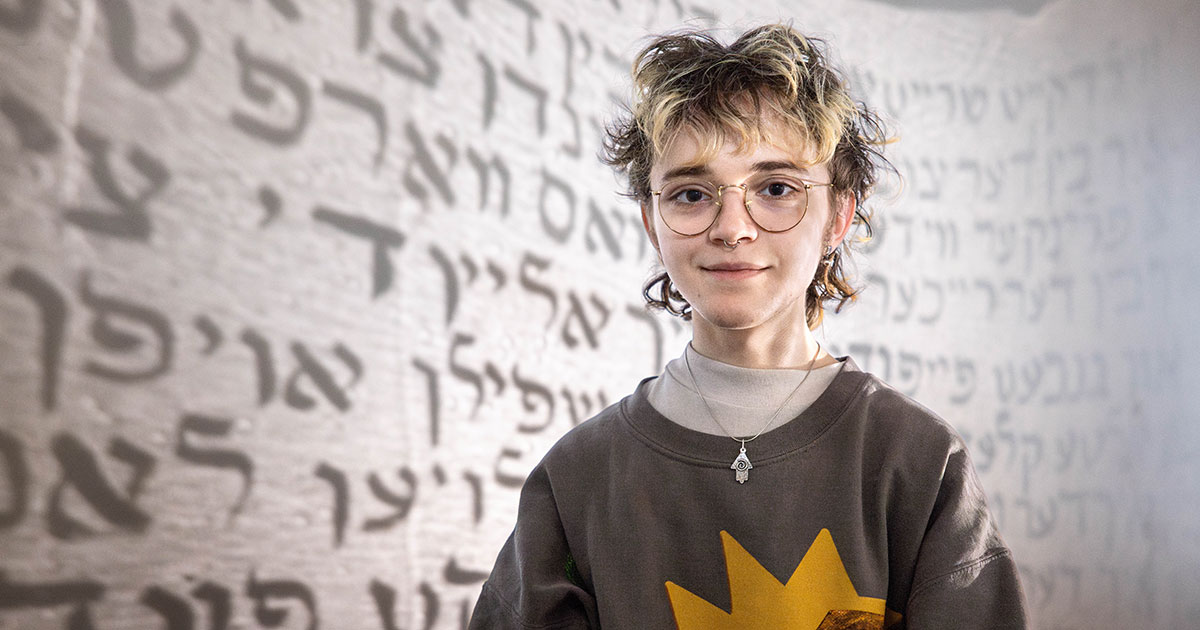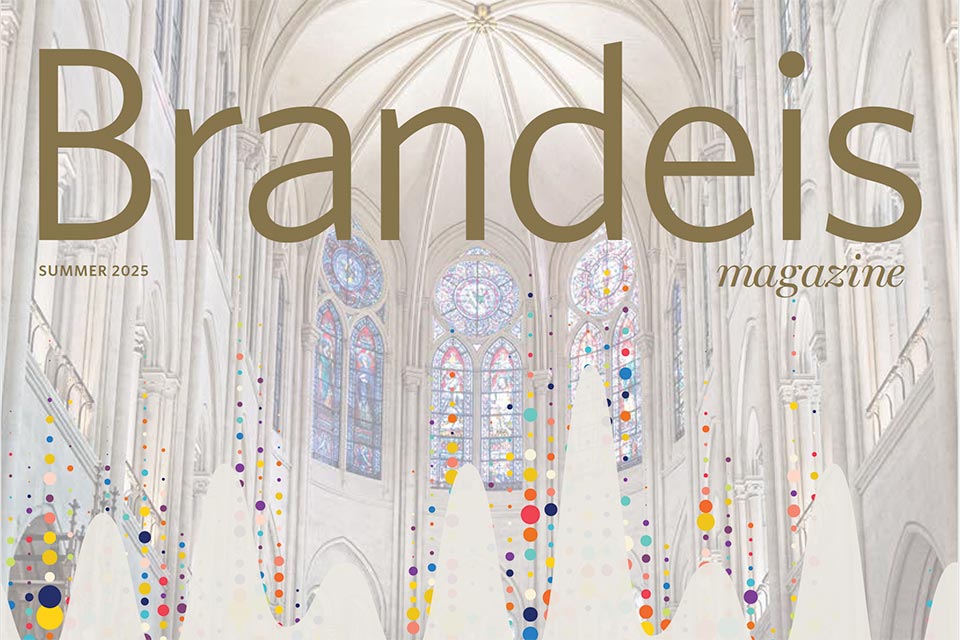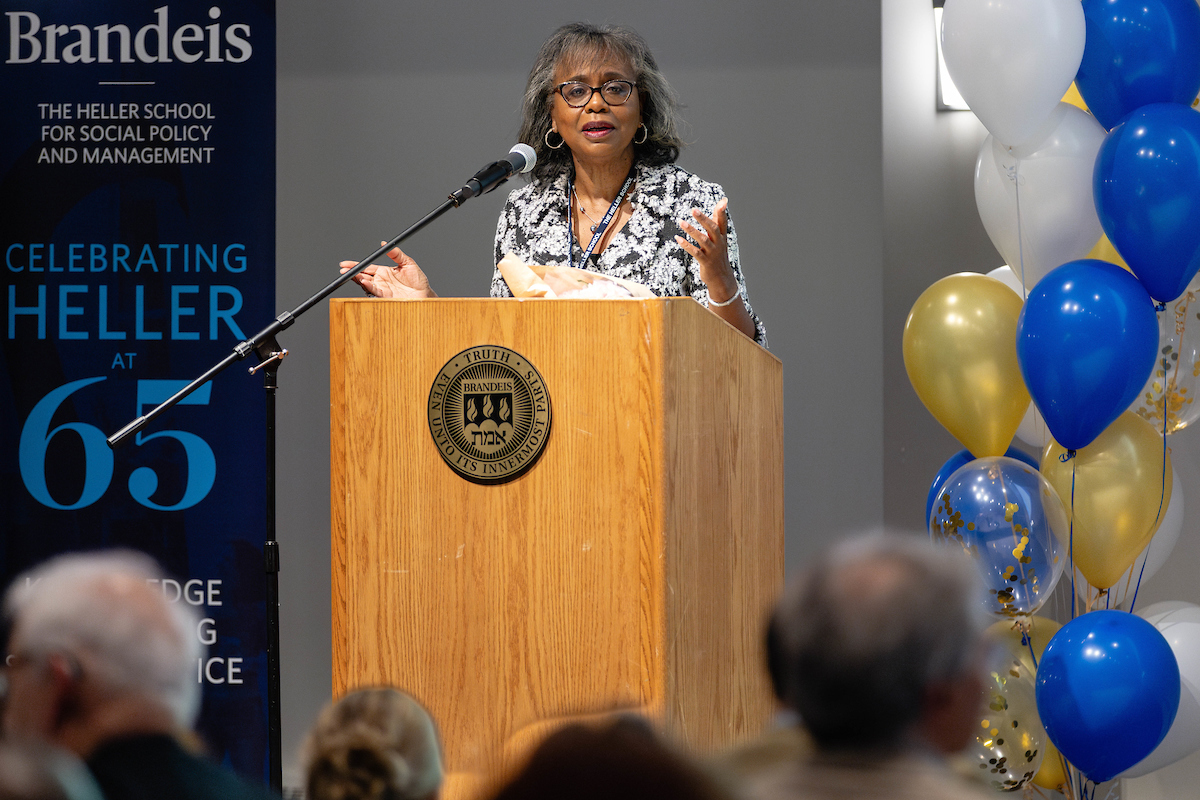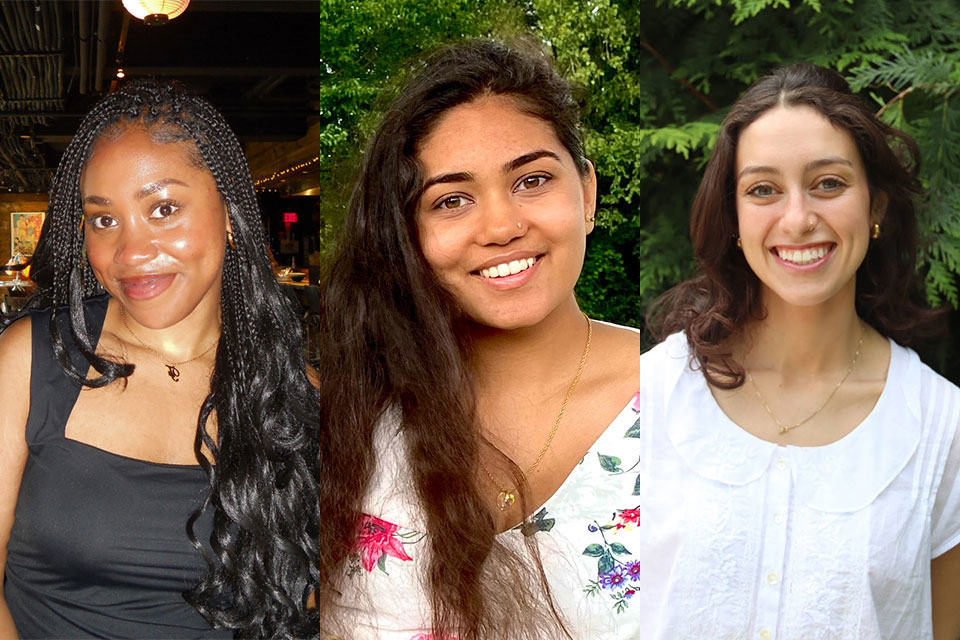Bringing Yiddish culture to life through poetry and art

Photo Credit: Gaelen Morse
By Kennedy Ryan
April 5, 2024
By engaging with poetry through visual art, Nathan Bernstein ’24 is bringing the Yiddish language to three dimensional life. His work, entitled “Lider un Kunst,” will be on display during the Leonard Bernstein Festival of the Creative Arts in the Shapiro Campus Center lounge across from the SCC theater, April 6-14, 2024.
The linguistics major discovered his interest in Yiddish poetry through his coursework at Brandeis. After taking Yiddish courses with professor Ellen Kellman, Bernstein continued to pursue his interest and take on an independent study, focusing on modern Yiddish poetry and translation. Over the course of his study, he found inspiration for art through the poems he translated.
Bernstein spoke with Brandeis Stories about his path to deepening his connection to his Jewish identity, finding community through Yiddish, and bringing his art to life.
Why did you decide to learn Yiddish?
Growing up, I was not very connected to Jewish community, as much of my extended family had passed away or lived in other parts of the country. I was not very connected to any community. Growing up queer in a small town, I felt very alienated from those around me. This only got worse as I developed chronic health issues that forced me to drop out of high school at 15. Rebuilding my connections to Jewish community during this time is what got me through it.
I quickly realized that there was an entire world of Jewish life, history, and culture that many Jewish spaces were leaving out of the picture, namely Yiddish. Jews of Eastern European descent had spent 1,000 years speaking this language and building a deeply connected and intellectual community around it, and almost no one was talking about it. In the wake of the Holocaust, the political prioritization of Hebrew, and the forced assimilation of Yiddish culture and thought into general American culture, so much of this world has been taken out of the contemporary Jewish zeitgeist. The more I learned about it, the more it resonated with me.
I struggled to find Yiddish language resources, so when I found the Yiddish program at Brandeis, it felt imperative that I take part in it. Speaking Yiddish, learning about Yiddish history, and reading Yiddish literature has allowed me to strengthen my connections to Jewish history, thought, and community. Incorporating it into my aesthetic practice has allowed me to bring my discoveries to others and become an active participant in reaffirming and creating Yiddish culture.
What inspires your art?
Sometimes I will read poetry and immediately have a visual idea. Other times, I'll be thinking about a poem, and then, a few weeks later, something in my life makes me connect ideas or themes from that poem to a visual concept. I’ll use that [idea] as a springboard to create a piece.
My works are a mix of mixed-media sculpture, drawing, and calligraphy. They depict or are in conversation with a series of late 19th/early 20th century poems I translated during my independent study.
Why has this process been special to you?
There’s something intimate in sitting with and attempting to translate the words of someone you’ll never know personally but whose writing directly resonates with you, your family, and your community’s experiences. I feel like this process gives me a chance to make that experience more accessible to those who wouldn’t be able to read or engage with the original texts otherwise.
What is your favorite part of the experience?
Today, Yiddish communities are relatively disconnected, and many contemporary Jewish spaces aren’t engaged with Yiddish history and culture. I was worried that I would be the only person interested in the themes and ideas I’m exploring in my work.
It’s been gratifying and exciting how many people have reached out to me asking for translations or how to get connected to the Yiddish Program.
It’s also been really fulfilling to use Yiddish history and values of solidarity and collective action to connect with and support different communities on campus. People are eager to learn and engage, we just need to actively make space for it.


